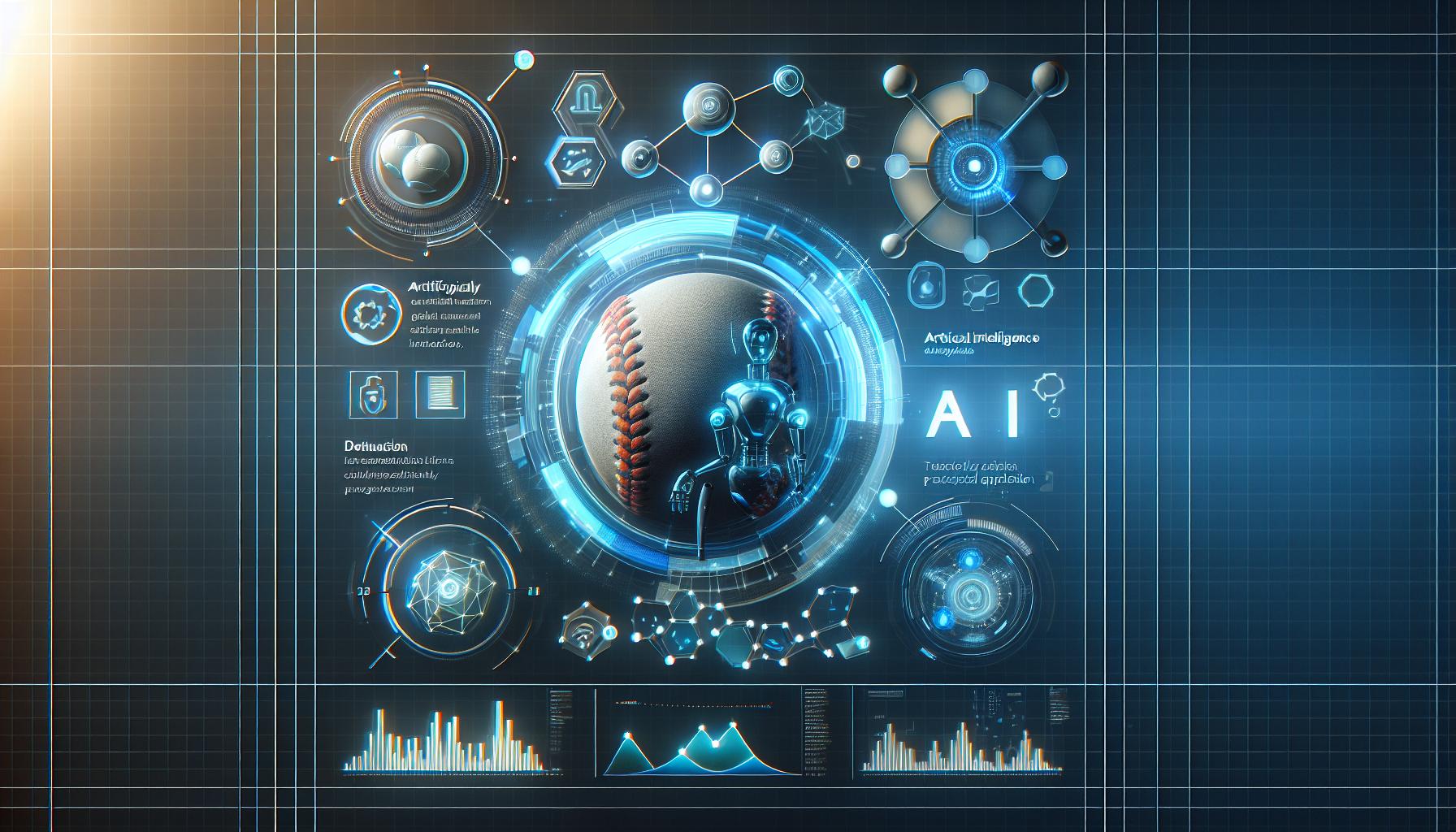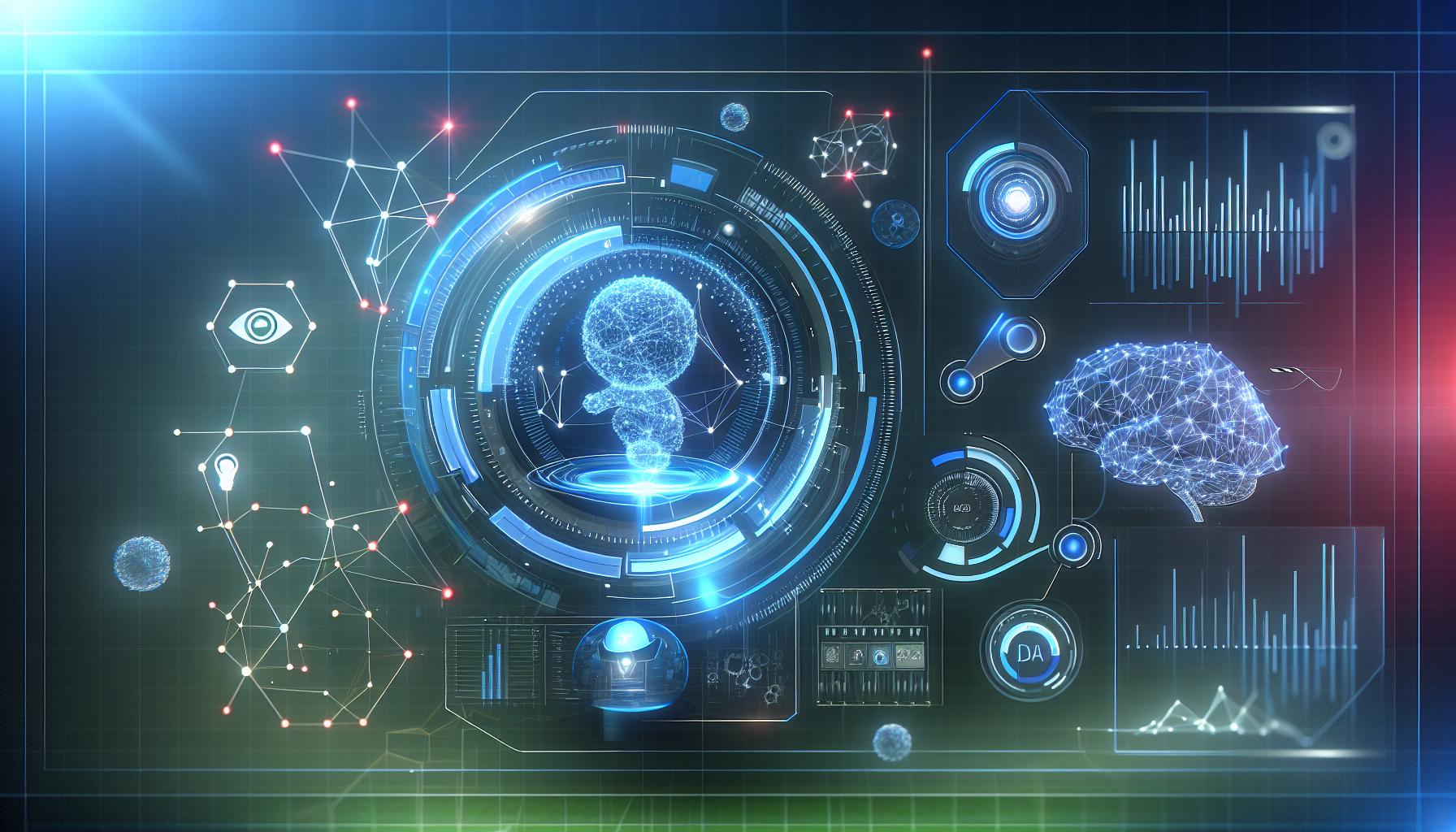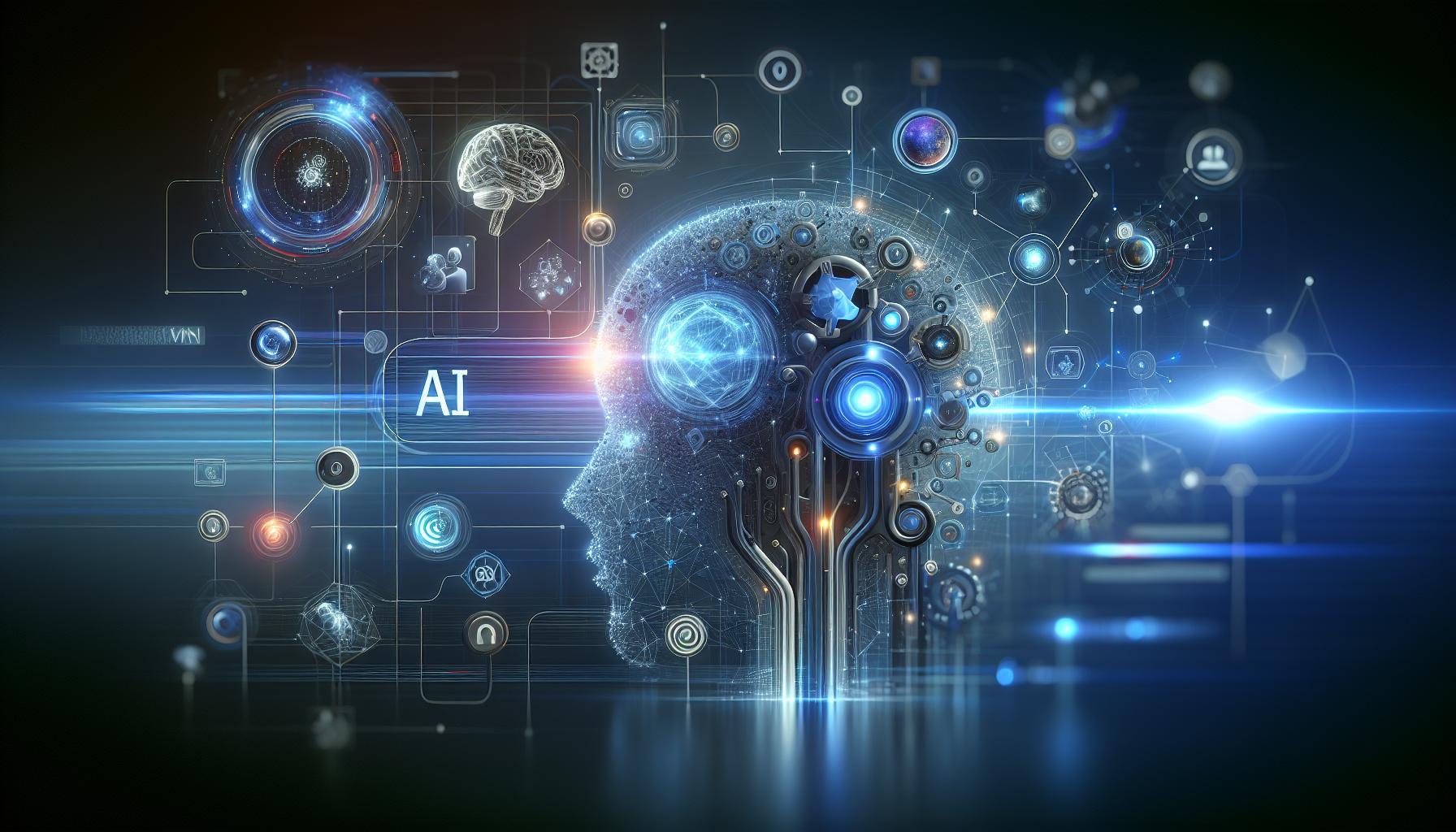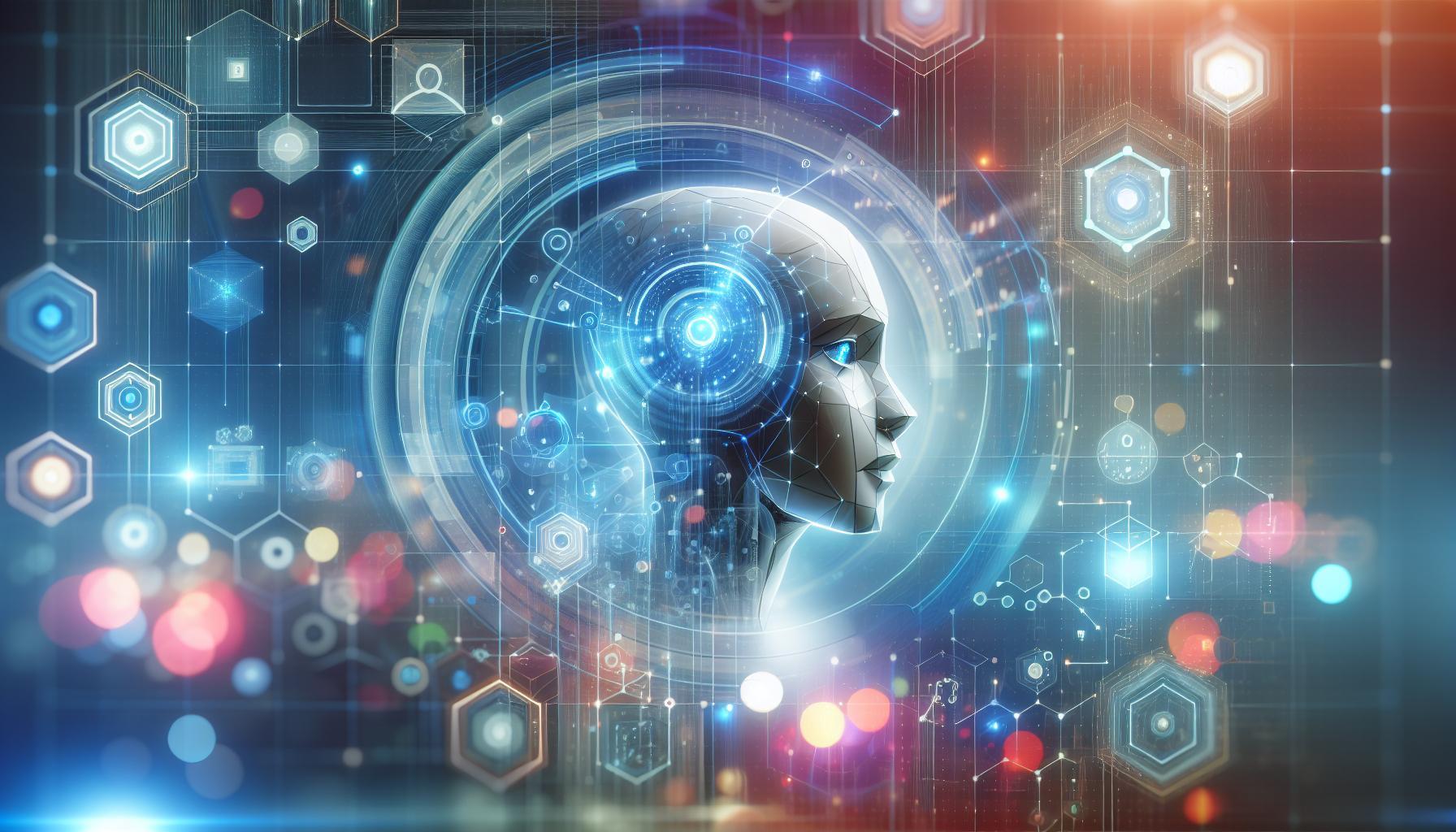As baseball enthusiasts seek an edge in understanding player performance, the ability to accurately predict home run outcomes has become increasingly valuable. Leveraging data-driven insights from advanced algorithms, this innovative approach not only enhances fan engagement but also aids teams in strategic decision-making. Discover how AI is transforming our grasp of America’s pastime.
Understanding the Basics: How AI Predicts Baseball Performance
Baseball, often referred to as America’s pastime, has long been analyzed through various lenses, from traditional statistics to advanced metrics. With the advent of technology, especially artificial intelligence, the way we evaluate player performance has evolved significantly. AI has become a pivotal player in predicting baseball outcomes, enabling teams to capitalize on data in unprecedented ways.
How AI Utilizes Data in Baseball
AI algorithms analyze vast amounts of data, uncovering insights that may not be immediately apparent through standard statistical methods. From player statistics and historical performance to real-time game data, AI can process and interpret these metrics to forecast future performance. The process involves several key components:
- Data Collection: AI systems aggregate data from various sources, including player stats, game footage, and even weather conditions that could impact gameplay.
- Machine Learning Models: These models are trained on historical performance data, identifying patterns that predict future results.
- Continual Learning: AI continuously updates its algorithms as new game data comes in, allowing predictions to adapt based on the latest information.
Key Metrics Used in AI Predictions
To forecast player performance accurately, AI utilizes several crucial metrics. These may include:
| Metric | Description |
|---|---|
| Batting Average (BA) | Measures a player’s hitting performance, calculated as hits divided by at-bats. |
| On-Base Plus Slugging (OPS) | Combines on-base percentage with slugging percentage to assess overall offensive value. |
| Exit Velocity | Indicates how fast the ball leaves the bat, influencing potential for hits and home runs. |
| Launch Angle | Measures the angle at which the ball leaves the bat, crucial for predicting home runs. |
Understanding these metrics allows teams to make informed decisions, whether it’s recruiting new talent or setting strategies for upcoming games. For instance, a player with a high exit velocity and optimal launch angle is more likely to hit home runs, making them a valuable asset to any lineup.
Practical Applications of AI in Game Strategy
The insights derived from AI not only help in evaluating player performance but also significantly impact game strategies. Coaches can utilize predictive analytics for matchups—analyzing historical data to determine which pitchers a specific batter performs well against. Moreover, AI can optimize defensive alignments, suggesting the best placements based on the tendencies of opposing hitters.
By leveraging AI in these ways, teams can improve their chances of success both on and off the field, ensuring they remain competitive in a rapidly advancing sport. Transitioning from traditional methods to utilizing an AI Home Run Predictor represents a shift toward data-driven performance enhancement in baseball, empowering teams with knowledge that was once just out of reach.
Key Metrics in Baseball Analytics: What You Need to Know

In the fast-evolving game of baseball, understanding advanced metrics is crucial for teams aiming to outperform their competition. The integration of data analytics has transformed traditional evaluation methods, allowing managers and analysts to make more informed decisions. Among these advancements, tools like the AI Home Run Predictor play a pivotal role in forecasting player performance based on a wide array of metrics.
Essential Metrics for Performance Prediction
The AI Home Run Predictor utilizes several key metrics to assess a player’s potential performance effectively. Here are some of the most significant ones:
- Exit Velocity: This metric measures the speed of the baseball as it leaves the bat, providing insights into a player’s hitting power. Higher exit velocities typically correlate with a greater likelihood of hitting home runs.
- Launch Angle: This measures the angle at which the ball leaves the bat. An optimal launch angle can significantly increase the chances of a home run, as it dictates the trajectory of the ball.
- Barrel Rate: This metric indicates how often a player hits the ball with the “sweet spot” of the bat, which can lead to more home runs. A higher barrel rate usually signifies good hitting technique and potential for power.
- Hard-Hit Percentage: The percentage of batted balls that are classified as “hard hits.” This is crucial in identifying players who consistently make impactful contact with the ball.
Real-World Applications of Metrics
Understanding these metrics can significantly aid teams in strategizing their lineups and enhancing player development. For instance, consider a player with an exceptional exit velocity but a low launch angle. Coaches can focus on adjusting the player’s swing to optimize their launch angle, thereby maximizing their home run potential. Similarly, analyzing barrel rates can help teams identify emerging talent who might not yet be on the radar but possess characteristics of future power hitters.
Best practices also involve combining these metrics with situational data, such as opposing pitcher tendencies and environmental factors like ballpark dimensions. This comprehensive approach ensures that players are not only evaluated on past performance but also on their potential to contribute to future successes, making the AI Home Run Predictor an invaluable resource for teams looking to leverage data analytics effectively.
By focusing on these key metrics, teams can enhance their decision-making processes and strategically align their player development efforts, ultimately leading to improved performance on the field.
The Role of Machine Learning in Predicting Home Runs

The ability to forecast whether a player will hit a home run may sound like a complex challenge, but advances in machine learning have made this task increasingly feasible and precise. Machine learning models analyze vast datasets that encompass player statistics, pitching styles, weather conditions, and even historical game outcomes. By identifying patterns in this data, these models can predict potential home runs with surprising accuracy. This innovative approach is redefining how teams prepare for games and make strategic decisions regarding player performance.
A key aspect of the machine learning process used in predicting home runs involves feature selection, where specific variables are chosen based on their relevance and predictive power. Common features can include:
- Player Statistics: Batting averages, on-base percentage, and slugging percentage are crucial metrics that contribute to a player’s likelihood of hitting a home run.
- Pitching Data: Knowing the speed and type of pitches thrown by opponents can highlight opportunities for batters to excel.
- Ballpark Factors: Dimensions and atmospheric conditions of stadiums can dramatically affect how a ball travels.
- Historical Performances: Analyzing past games can uncover trends when similar conditions occur.
Building the Predictive Model
Developing a machine learning model for predicting home runs typically follows a series of steps:
- Data Collection: Gather comprehensive datasets from previous seasons, including player statistics, game logs, and external factors like weather.
- Data Preprocessing: Clean and structure the data to ensure accuracy and remove any inconsistencies that could skew results.
- Model Selection: Choose the appropriate machine learning algorithm—options may include decision trees, random forests, or neural networks—based on the complexity and volume of data.
- Training the Model: Input the data into the model, allowing it to learn from the patterns and correlations inherent in the dataset. Adjust parameters as needed to improve prediction accuracy.
- Evaluating Predictions: Test the model against unseen data to assess its predictive capabilities and make refinements.
By integrating concepts from the AI Home Run Predictor: Forecast Baseball Performance with Data, teams can harness the power of predictive analytics to optimize player training, make roster decisions, and enhance game-day strategies. This capability not only empowers coaches and analysts but also engages fans with a deeper understanding of the game, turning statistics into insightful narratives.
Utilizing machine learning for home run predictions showcases the intersection of technology and sports, opening doors to new levels of performance analysis and entertainment in baseball.
Building a Predictive Model: Steps from Data Collection to Insights

To effectively forecast baseball performance and optimize strategies, constructing a predictive model starts with a solid ground of data collection. This initial step is crucial, as the quality and diversity of the data directly influence the model’s accuracy. For the AI Home Run Predictor, comprehensive data sets that include player statistics, historical performance records, weather conditions, and game location details should be gathered. This wealth of information allows for a multifaceted analysis, leading to more precise predictions.
Data Preparation: Cleaning and Transforming
Once the relevant data has been collected, it’s imperative to prepare it for analysis. This involves cleaning the data—removing duplicates, correcting errors, and handling missing values. Data transformation may also be necessary to standardize formats. For instance, converting all player statistics to the same scale (e.g., batting averages, strikeout rates) ensures consistent comparisons. This meticulous preparation sets the foundation for a reliable predictive model.
Selecting Features for the Model
In predictive modeling, choosing the right features is essential for performance forecasting. Features are specific variables that the model will use to make predictions. In the context of the AI Home Run Predictor, features might include individual player metrics (like home runs in previous seasons, strike zone metrics), and contextual factors (such as opposing pitcher statistics or park dimensions). Conducting exploratory data analysis can help identify which features are most correlated with successful outcomes—lagging indicators that have historically proven predictive.
| Feature | Type | Importance |
|---|---|---|
| Player Batting Average | Metric | High |
| Opponent Pitcher ERA | Metric | Medium |
| Weather Conditions | Contextual | Medium |
| Stadium Factors | Contextual | High |
Model Training and Validation
After feature selection, the next stage is training the model using historical data. This involves feeding the data into algorithms such as regression analysis, decision trees, or machine learning frameworks, each capable of capturing complex patterns. Using techniques like cross-validation can help gauge the robustness of the model by testing it against different subsets of the data to avoid overfitting—ensuring the model generalizes well to new, unseen data.
By following these steps from data collection to insights, the AI Home Run Predictor not only makes baseball performance forecasts more accurate but also empowers teams to make informed strategic decisions based on detailed statistical analysis.
The Impact of Player History and Environmental Factors on Predictions

Player history and environmental factors are two pivotal elements that can significantly influence the accuracy of predictions made by the AI Home Run Predictor. In the unpredictable realm of baseball, where one swing can change the trajectory of a game, understanding these factors is crucial for making informed forecasts.
Understanding Player History
When it comes to leveraging history for predictive analytics, performance metrics such as a player’s previous home runs, batting average, and on-base plus slugging (OPS) serve as foundational elements. These statistics help the AI model grasp the nuances of a player’s style and capabilities. Furthermore, factors such as age and injury history can ripple through a player’s performance as well. Here’s how each aspect can shape predictions:
- Statistics: Historic performances unveil trends — some players tend to excel under pressure or against particular pitchers.
- Injury Records: A history of injuries can detract from a player’s power or speed, both of which are vital in hitting home runs.
- Developmental Track: Analyzing how a player’s skills have matured over time allows for better insight into future performances.
By integrating this detailed player data, the AI Home Run Predictor can identify patterns that lead to successful outcomes more effectively, thus enhancing its forecasting accuracy.
The Role of Environmental Factors
While player history lays a solid groundwork for predictions, environmental factors add another layer of complexity to the AI model. These elements can dramatically impact a player’s performance and include stadium dimensions, weather conditions, and even humidity levels. Some essential environmental considerations are:
- Stadium Dimensions: The size and layout of a ballpark can drastically affect home run frequency.
- Weather Conditions: Wind direction and speed can help or hinder a ball’s flight, significantly influencing whether a ball leaves the yard.
- Time of Year: Cooler weather tends to reduce home run production, while warmer conditions can enhance it.
The AI Home Run Predictor meticulously analyzes these elements by employing vast datasets, allowing it to discern how such factors interact with players’ histories to yield accurate forecasts.
Bringing It All Together
It’s within the intersection of player history and environmental factors where the AI Home Run Predictor truly shines. By understanding how these variables interlink, predictive models become more nuanced. For instance, a player who has a strong home run record against certain pitchers, kindly correlated with a boon in supportive weather and favorable park dimensions, could be slated for a breakout game.
The result is a multifaceted approach that empowers teams, analysts, and enthusiasts to make decisions based on comprehensive data rather than mere speculation. By fully harnessing both player history and environmental nuance, the AI Home Run Predictor continues to redefine the approach to forecasting baseball performance, leading to more informed strategies on and off the field.
Practical Applications: How Teams Use AI to Enhance Game Strategies
In the fast-evolving realm of baseball, teams are increasingly turning to advanced technology to gain a crucial edge over their competitors. One of the standout innovations driving this transformation is the AI Home Run Predictor, a tool designed to forecast baseball performance by analyzing vast datasets. As teams embrace this data-driven approach, the possibilities for enhancing game strategies become remarkably expansive.
Data-Driven Decision Making
The AI Home Run Predictor operates by synthesizing historical performance data, player statistics, and game conditions to assess the likelihood of home runs under various circumstances. This predictive power allows coaching staff and analysts to make informed decisions, such as:
- Player Matchups: Optimize lineups based on specific pitchers and ballparks.
- Injury Management: Identify patterns in player fatigue or potential injuries to adjust playtime effectively.
- Situational Strategy: Determine the best moments to utilize pinch hitters or launch specific plays, increasing the probability of scoring.
Through this nuanced understanding of player performance and environmental factors, teams can align their strategies with the data, increasing their chances of success on the field.
Real-World Applications in Major League Baseball
Major League Baseball (MLB) teams have already started to leverage AI technologies, specifically those akin to the AI Home Run Predictor, to enhance their game strategies. For example, the New York Yankees utilized machine learning models to analyze player swing mechanics and pitcher tendencies. By combining this analysis with the home run prediction capabilities, they have refined their batting strategies to target specific types of pitches that are most likely to yield high home run rates.
| Team | Strategy Leveraged | Outcome |
|---|---|---|
| Boston Red Sox | Player Analysis Using AI | Improved batting averages by 15% against fastballs |
| Los Angeles Dodgers | Pitcher Matchup Optimization | Increased home run production by 20% |
| Chicago Cubs | Real-Time Game Adjustments | Enhanced game strategy leading to a playoff berth |
Future Possibilities
The future of baseball strategies will likely see even greater integration of AI technologies like the AI Home Run Predictor. Teams can harness wearables that track player exertion and results in real-time, feeding this data back into their predictive models. By continuously refining their approach based on real-time insights, clubs can adjust strategies mid-game, a game-changer that ensures they remain competitive in the ever-accelerating landscape of professional baseball.
As these technologies become more sophisticated, the ability for teams to tailor their strategies based on correct forecasts will become not just beneficial but essential for success at any level of the sport.
Overcoming Challenges: Common Pitfalls in AI Forecasting for Baseball
In the fast-evolving world of baseball analytics, the integration of AI presents groundbreaking opportunities for predicting player performance. However, as promising as these technologies might seem, there are significant challenges that can hinder the accuracy and reliability of AI-driven forecasting models. Understanding these common pitfalls is essential for teams, analysts, and enthusiasts who aim to leverage the *AI Home Run Predictor: Forecast Baseball Performance with Data* effectively.
One prevalent challenge in AI forecasting for baseball is the problem of data quality. Poor quality data can lead to misleading predictions. Teams often collect vast amounts of statistics; however, not all data is useful or accurate. Factors such as erroneous game records, inconsistent data entry, and variations in how statistics are compiled across different leagues can introduce noise that skews AI algorithms. To combat this issue, here are a few actionable steps:
- Regular Data Audits: Implement a systematic approach to review and cleanse data regularly to ensure accuracy.
- Standardized Metrics: Utilize widely accepted metrics across all datasets for consistency.
- Real-time Updates: Ensure that data is updated in real-time, minimizing discrepancies that could arise from lagging information.
Another significant pitfall is the over-reliance on historical data without accounting for changes in the game dynamics. While historical performance often serves as a strong predictor, it does not always translate to future success due to factors such as player injuries, team dynamics, or changes in coaching strategies. For instance, a player who thrived under a particular coach may not perform similarly after a coaching change. To address this, it is crucial to incorporate contextual elements into the forecasting models:
Incorporating Contextual Variables
Consider integrating a variety of contextual variables alongside traditional statistics. This could include elements such as player mental health, team morale, and even elements like weather conditions that might affect game-day performance. By broadening the data parameters, the *AI Home Run Predictor: Forecast Baseball Performance with Data* can yield more nuanced predictions.
Moreover, another common hurdle is the interpretability of AI models. While powerful algorithms can make precise predictions, conveying these results in an understandable manner is critical. Complex models can create a “black box” effect, where users are unable to understand how predictions are derived, leading to mistrust in the outcomes. To enhance interpretability, consider adopting the following strategies:
- Visualize Data: Use charts and graphs to display how different variables contribute to the model’s predictions.
- Feature Importance Analysis: Highlight which features are most influential in the forecasting process to build trust.
- Engage Stakeholders: Involve coaches and players in discussions about the predictions to validate insights.
By recognizing these challenges and implementing proactive strategies, users of the *AI Home Run Predictor: Forecast Baseball Performance with Data* can improve their forecasting accuracy and reliability, ultimately leading to more informed decision-making in the dynamic sphere of baseball analytics.
The Future of AI in Sports: Innovations on the Horizon
As the realm of sports continues to evolve, the integration of artificial intelligence is paving the way for groundbreaking innovations that promise to revolutionize how we understand and engage with athletic performance. One of the most exciting prospects on the horizon is the development of predictive analytics tools like the AI Home Run Predictor, which utilizes advanced data methodologies to forecast player performance with remarkable accuracy. This not only enhances game strategy but also provides teams with critical insights that can guide recruitment, training, and on-field decision-making.
Impact on Player Development and Game Strategy
With precision data analytics, teams can tailor training regimens to individual players based on their predicted performance metrics. The AI Home Run Predictor exemplifies how machine learning can analyze vast datasets, identifying patterns that may be invisible to human scouts. This capability allows coaches to focus on developing specific skills in players, maximizing their potential to hit home runs or perform under pressure. By leveraging such data-driven insights, organizations can significantly enhance their scouting effectiveness, ensuring they invest in the right talent.
Enhancing Fan Engagement and Experience
Fan engagement is also set to leap forward as AI-based solutions become commonplace. The AI Home Run Predictor could serve as a compelling tool for fan interaction, providing real-time forecasts and analysis during games. Imagine spectators equipped with apps that not only track current game stats but also offer predictive insights about potential home runs or key player performances. This interactive element can create a richer viewing experience, transforming passive spectators into active participants in the game.
Fostering Informed Decision-Making
For sports organizations, the introduction of sophisticated AI tools is invaluable for making informed business and operational decisions. As the AI Home Run Predictor demonstrates, data analytics can inform everything from game-day strategies to off-season training schedules. When organizations understand the predictive capacity of player statistics, they can better allocate resources and strategize for upcoming seasons, leading to improved overall performance and profitability.
In conclusion, as we look to the future, the potential impact of artificial intelligence on sports cannot be overstated. With tools like the AI Home Run Predictor at the forefront, teams are better positioned to enhance player performance, engage fans, and optimize operational efficiencies. The possibilities are endless, and embracing these innovations is not just an option; it’s essential for staying competitive in the dynamic landscape of modern athletics.
Frequently Asked Questions
What is the AI Home Run Predictor: Forecast Baseball Performance with Data?
The AI Home Run Predictor is a tool designed to analyze baseball data and predict player performance, specifically home run probabilities. By utilizing historical statistics and advanced machine learning techniques, it provides insights into which players are likely to excel during games.
This predictive model incorporates various data points such as player batting averages, pitching matchups, and environmental factors like weather conditions. By leveraging these inputs, the model makes informed guesses about a player’s chances of hitting home runs in upcoming games.
How does the AI Home Run Predictor work?
The AI Home Run Predictor uses sophisticated algorithms to analyze vast amounts of baseball data. This includes historical performance, player metrics, and even in-game variables to forecast future outcomes.
Machine learning techniques allow the model to recognize patterns and relationships within the data, adjusting predictions based on real-time information. It’s a dynamic tool that combines data science with sports analytics to provide accurate forecasts.
Why does using data for baseball performance prediction matter?
Using data to predict baseball performance enhances decision-making for teams, players, and fans. It allows for strategic planning, such as optimizing player matchups or game strategies based on potential performance forecasts.
By leveraging a tool like the AI Home Run Predictor, stakeholders in baseball can make data-driven choices that may lead to better team outcomes and increased enjoyment of the game. Understanding performance trends through data also adds depth to fan engagement.
Can I trust the predictions from the AI Home Run Predictor?
While the AI Home Run Predictor: Forecast Baseball Performance with Data offers valuable insights, predictions are probabilities, not certainties. The accuracy depends on the quality of the input data and the complexity of the models used.
What data is used in the AI Home Run Predictor?
The AI Home Run Predictor utilizes a wide range of data, including player statistics, historical game performance, batting averages, and pitching analysis. It also considers _environmental factors_ such as stadium dimensions and weather.
The integration of multiple data sources enables the tool to create a comprehensive view of performance dynamics. This breadth of information improves the reliability of predictions and helps in tailoring strategies for individual players or teams.
How can I access the AI Home Run Predictor?
You can generally access the AI Home Run Predictor through sports analytics websites or specialized platforms that offer player performance forecasting tools. Some may require a subscription for detailed insights.
For those interested in diving deeper, many platforms also provide tutorials and analyses on how to interpret the data effectively, which can enhance your understanding of player performance insights.
What are the benefits of using the AI Home Run Predictor?
The AI Home Run Predictor: Forecast Baseball Performance with Data helps players, coaches, and fans to make more informed decisions. Benefits include improved game strategies, enhanced player training, and insightful fan experiences.
Access to accurate predictions can sway team tactics and player development. By analyzing trends and performance metrics, stakeholders can leverage data to foster more competitive gameplay in an ever-evolving sport.
To Conclude
In conclusion, the AI Home Run Predictor serves as a cutting-edge tool that harnesses the power of data to forecast baseball performance. By analyzing player statistics, environmental conditions, and historical trends, this technology offers a smarter perspective on the game, proving that data-driven insights can significantly enhance decision-making both on and off the field.
We’ve explored how machine learning algorithms can identify patterns and predict outcomes, making the complex world of AI accessible to baseball enthusiasts and professionals alike. Understanding these concepts empowers you to make informed choices, whether you’re a coach, a player, or simply a fan.
Don’t stop here—dive deeper into the fascinating intersection of AI and sports. Engage with the tools available to analyze your favorite teams and players, explore case studies on successful predictions, and stay informed about the latest advancements in sports technology. The future of baseball, powered by AI, awaits your exploration!





